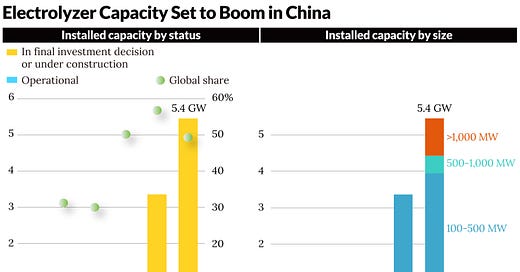In Depth: In China, Hydrogen’s Star Rises
As interest in the potentially environmentally friendly energy source grows, experts say cost-effective green versions of the gas are a long way off
In the quest for cleaner energy sources, hydrogen’s star is rising.
China is just one of a growing number of jurisdictions where policymaker and investor interest in the flammable gas is heating up. Once tarnished by its association with the fiery Hindenburg blimp disaster that punctured the hubris of Nazi Germany, hydrogen has undergone something of a revival in recent years as a promising fuel for cells that power trucks, buses and even passenger cars. The advantage over their fossil-fuel-powered counterparts is distinct: they produce no tailpipe exhaust.
Amid efforts to head off the most disastrous impacts of climate change, zero-emission cars may sound too good to be true. They are. Most hydrogen is in fact produced from fossil fuels using processes that belch out climate-warming carbon emissions, shifting the car’s pollution further upstream.
Growing political and regulatory attention on the supply chains behind green technologies could be set to change that. It’s stoked a push to develop sources of so-called low-emission hydrogen, known variously as “green” or “clean” hydrogen depending on how it is made.
In the U.S., the Biden Administration’s Inflation Reduction Act provides tax credits while the Bipartisan Infrastructure Law offers $9.5 billion in funding to spur the manufacturing of “clean hydrogen.”
The European Commission, the executive arm of the European Union, launched a long-term hydrogen roadmap in July 2020. Billions of euros in support, mostly in the form of public-private partnerships, have followed.
China launched its first long-term plan for hydrogen last year, setting clear targets for the development of “green hydrogen” by 2025, and seeking to grow its role in the nation’s energy mix significantly through 2035.
“The United States and the European Union lead policy action, while China has taken the lead in deployment,” the International Energy Agency (IEA) said.
Keep reading with a 7-day free trial
Subscribe to Caixin Global China Watch to keep reading this post and get 7 days of free access to the full post archives.



